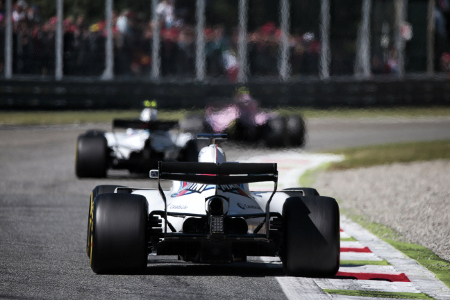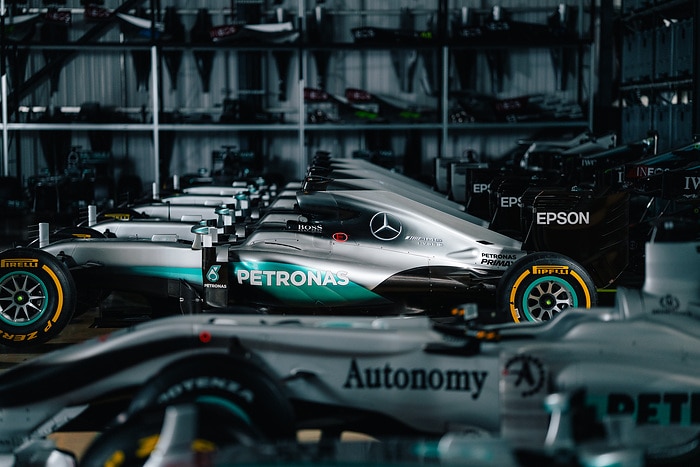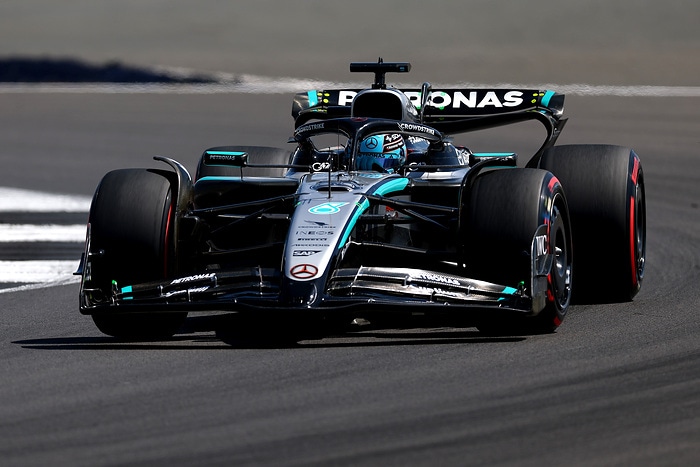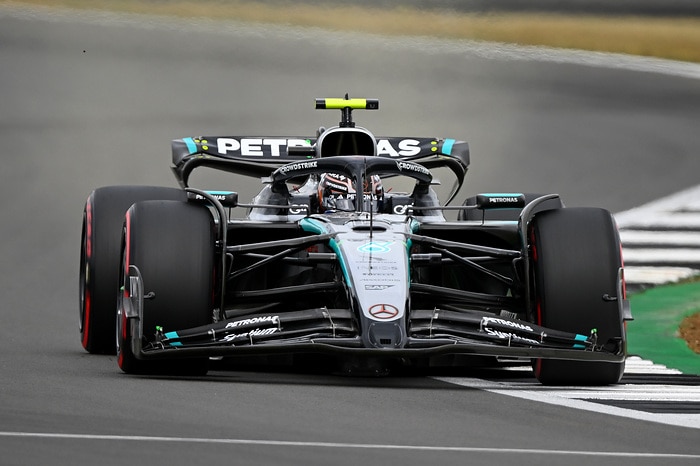
Williams Advanced Engineering has revealed its new, fully-electric car platform this week as Williams continues to diversify and innovate from its Formula 1 roots.
The FW-EVX aims to maximise how light and efficient an electric car can be with a mass of 955 kilograms. It has debuted at the Low Carbon Vehicle Show at Millbrook, UK (September 6-7).
Part of the Williams Formula 1 Group, WAE is a technology and engineering company which was borne out of Sir Frank Williams and Sir Patrick Head’s original F1 team in 2010 and now works to produce technology which has applications away from F1.
The company makes the battery systems for Formula E and partnered with Jaguar to make the plug-in hybrid C-X75 road car. As a spin-off from the F1 team, WAE focuses mostly on renewable energy and low-carbon products and has clearly been influenced by F1’s hybrid era.
As with its F1 and supercar projects, WAE has made this electric vehicle suited to high performance and low volume production.
The FW-EVX platform itself would be scalable if ever produced, meaning that it isn’t just restricted to production in low volumes and this particular concept’s wheelbase of 2800mm is flexible.
This concept is four-wheel-drive but the front motors can be removed for a rear-wheel-drive electric vehicle.
On a twin-motored RWD version, the motors and gearbox could produce up to 320 kilowatts or around 429 horsepower, while the front-motor produces an extra 160kW (214 hp).
The battery cooling is more efficient, and the car is lighter and safer than existing electric vehicles which are currently limited due to the infancy of electric power in road cars.
Quoted battery capacity figures are 80kWh and a range of around 343 miles. The Tesla Model S, in comparison, has around 85kWh of capacity and a range of around 310 miles with both figures provided by the New European Driving Cycle (NEDC).
The battery itself uses sills to force more air into crucial areas as cooling is a huge obstacle in making an efficient power unit and the structure is strengthened with an exoskeleton to reinforce the battery in the event of a crash.
Each battery module produces around 2.1kWh of power, with 38 modules spread in three rows across the vehicle. Fully completed, it adds up to a quoted vehicle mass of 1750 kilograms, with the battery cells taking up 340kg of that.
The chassis and suspension add up to 180kg as the concept utilises carbon fibre and aluminium.
“Vehicle efficiency has always been core to Williams – whether it be in Formula One or with Williams Advanced Engineering’s customer projects,” said Paul McNamara, WAE Technical Director.
“These technologies, and our thinking around how to create a tightly integrated, light-weight chassis and powertrain package, have the potential to greatly increase the competitiveness of the next generation of electric vehicles.
“By making EVs more attractive to consumers, we can help accelerate their adoption and the air quality benefits they bring.”
Williams is determined to make its concept a reality and Craig Wilson, WAE Managing Director, said: “We believe there is a high potential business opportunity here, and are excited to see where this could take us.
“This represents a new direction for Williams’ Advanced Engineering business, as its own R&D team has developed the proprietary innovations and has submitted patents for a number of the inventions.”
Have your say on Williams’ electric concept platform in the comment section below.
Source :https://www.jamesallenonf1.com























